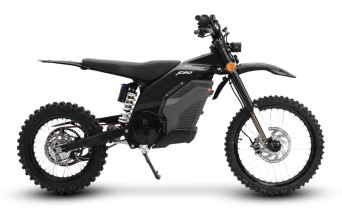Electric Motor Efficiency: A Modern Marvel
As we delve into the mechanics behind electric motorcycles, it’s essential to understand the efficiency of modern electric motors compared to internal combustion engines (ICE). This efficiency is one of the key reasons why electric vehicles are gaining traction in the automotive market.
How Do Modern Electric Motors Work?
Electric motors operate on the principle of electromagnetism. When electricity flows through coils in the motor, it generates a magnetic field that causes the rotor (the rotating part) to turn. This process is highly efficient because:
- Direct Energy Conversion: Electric motors convert electrical energy directly into mechanical energy with minimal loss. In contrast, ICEs lose significant energy as heat during fuel combustion.
- High Torque at Low Speeds: Electric motors provide maximum torque from a standstill, allowing for quick acceleration without needing to rev up like traditional engines.
Advantages Over Internal Combustion Engines
Electric motors offer several advantages over internal combustion engines:
- Higher Efficiency Rates: While ICEs typically operate at 20-30% efficiency due to energy loss in heat and friction, modern electric motors can achieve efficiencies exceeding 90%. This means that more energy is used for propulsion rather than wasted as heat.
- Weight Reduction: Advances in motor design have led to lighter components. For example, innovations such as PCB stator designs significantly reduce motor weight while enhancing performance. This weight reduction contributes to better handling and improved battery efficiency in electric motorcycles like the Caofen F80.
- Simplicity in Design: Electric motors have fewer moving parts compared to ICEs. This simplicity not only reduces manufacturing costs but also leads to lower maintenance requirements over time. Riders can enjoy longer intervals between service checks compared to gas-powered bikes.
Real-World Application: The Caofen F80
The Caofen F80 showcases these advantages with its high-performance motor that reaches speeds up to 52 mph while maintaining excellent energy efficiency. Key features include:
- Regenerative Braking System: This technology allows the bike to recover energy during braking, which is stored back into the battery for later use.
- Advanced Cooling Systems: The innovative cooling system used in its batteries helps extend their lifespan by effectively managing heat—a crucial factor for maintaining performance during demanding rides.
Conclusion
In summary, modern electric motors represent a significant leap forward in engineering compared to internal combustion engines. Their high efficiency, reduced weight, and simpler design make them ideal for applications in electric motorcycles like those from Caofen. As technology continues to evolve, we can expect even greater advancements in this field that will further enhance the appeal of electric motorcycles for riders everywhere.

Waterproof Electric Motorcycles: Caofen F80
Explore the waterproof capabilities of electric motorcycles, focusing on the Caofen F80 with its IP67 rating.
Mar 05 2025
Top Electric Motorcycles 2025
Discover the best electric motorcycles of 2025, from Caofen FX to SurRon and Harley-Davidson.
Feb 27 2025
